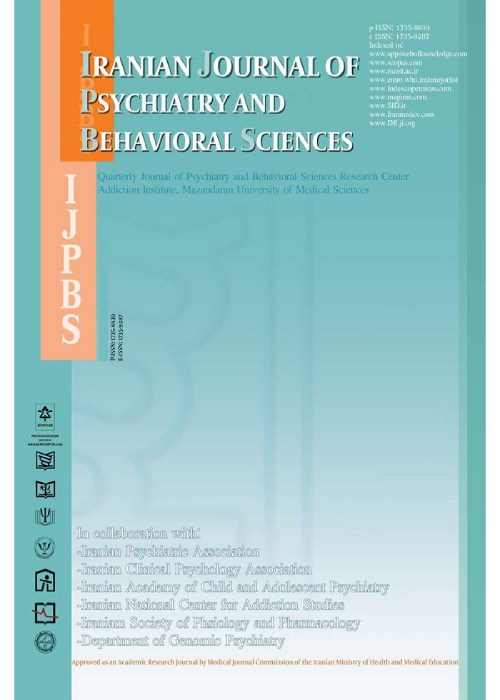Assessing Negative Automatic Thoughts: Psychometric Properties of the Turkish Version of the Cognition Checklist
Author(s):
Abstract:
Background
Beck’s theory of emotional disorder suggests that negative automatic thoughts (NATs) and the underlying schemata affect one’s way of interpreting situations and result in maladaptive coping strategies. Depending on their content and meaning, NATs are associated with specific emotions, and since they are usually quite brief, patients are often more aware of the emotion they feel. This relationship between cognition and emotion, therefore, is thought to form the background of the cognitive content specificity hypothesis. Researchers focusing on this hypothesis have suggested that instruments like the cognition checklist (CCL) might be an alternative to make a diagnostic distinction between depression and anxiety. Objectives
The aim of the present study was to assess the psychometric properties of the Turkish version of the CCL in a psychiatric outpatient sample. Patients and Methods
A total of 425 psychiatric outpatients 18 years of age and older were recruited. After a structured diagnostic interview, the participants completed the hospital anxiety depression scale (HADS), the automatic thoughts questionnaire (ATQ), and the CCL. An exploratory factor analysis was performed, followed by an oblique rotation. The internal consistency, test-retest reliability, and concurrent and discriminant validity analyses were undertaken. Results
The internal consistency of the CCL was excellent (Cronbach’s α = 0.95). The test-retest correlation coefficients were satisfactory (r = 0.80, P < 0.001 for CCL-D, and r = 0.79, P < 0.001 for CCL-A). The exploratory factor analysis revealed that a two-factor solution best fit the data. This bidimensional factor structure explained 51.27 % of the variance of the scale. The first factor consisted of items related to anxious cognitions, and the second factor of depressive cognitions. The CCL subscales significantly correlated with the ATQ (rs 0.44 for the CCL-D, and 0.32 for the CCL-A) as well as the other measures of mood severity (all Ps < 0.01). To a great extent, all items of the CCL were able to distinguish the clinical and non-clinical groups, suggesting the scale has high discriminating validity. Conclusions
The current study has provided evidence that the Turkish version of the CCL is a reliable and valid instrument to assess NATs in a clinical outpatient sample.Keywords:
Language:
English
Published:
Iranian Journal of Psychiatry and Behavioral Sciences, Volume:9 Issue: 4, Dec 2015
Page:
5
magiran.com/p1492608
دانلود و مطالعه متن این مقاله با یکی از روشهای زیر امکان پذیر است:
اشتراک شخصی
با عضویت و پرداخت آنلاین حق اشتراک یکساله به مبلغ 1,390,000ريال میتوانید 70 عنوان مطلب دانلود کنید!
اشتراک سازمانی
به کتابخانه دانشگاه یا محل کار خود پیشنهاد کنید تا اشتراک سازمانی این پایگاه را برای دسترسی نامحدود همه کاربران به متن مطالب تهیه نمایند!
توجه!
- حق عضویت دریافتی صرف حمایت از نشریات عضو و نگهداری، تکمیل و توسعه مگیران میشود.
- پرداخت حق اشتراک و دانلود مقالات اجازه بازنشر آن در سایر رسانههای چاپی و دیجیتال را به کاربر نمیدهد.
In order to view content subscription is required
Personal subscription
Subscribe magiran.com for 70 € euros via PayPal and download 70 articles during a year.
Organization subscription
Please contact us to subscribe your university or library for unlimited access!


